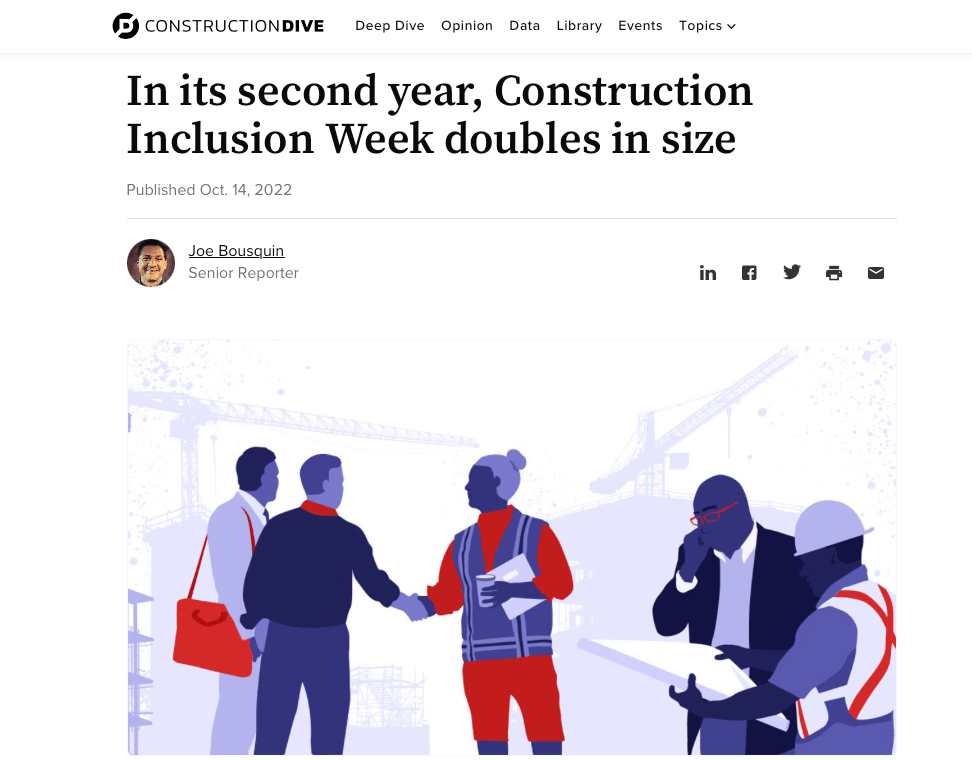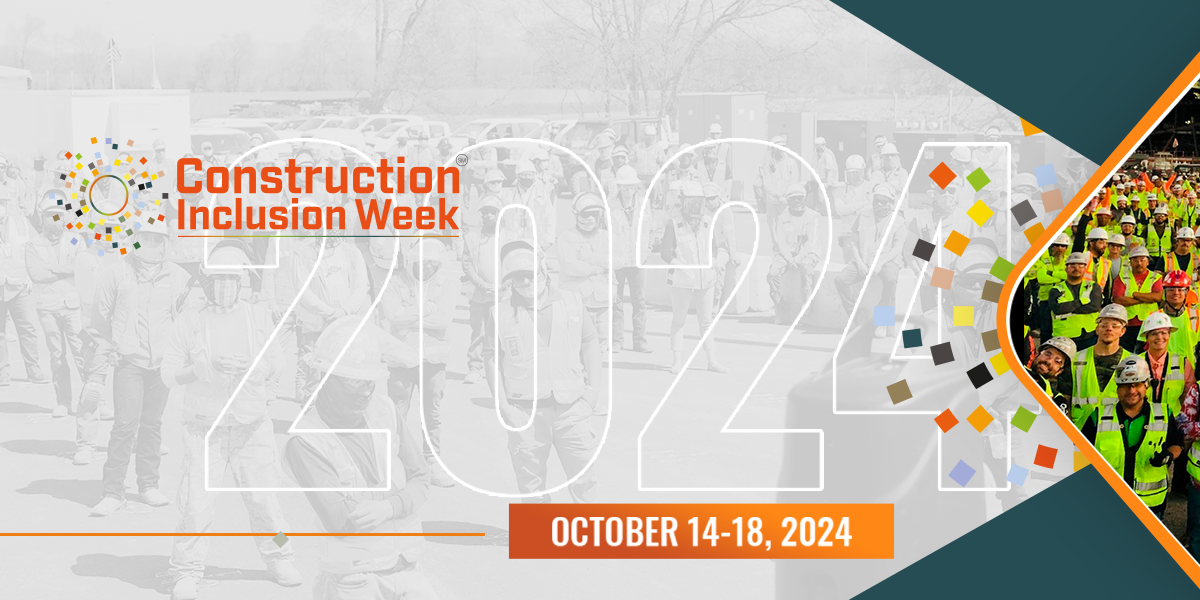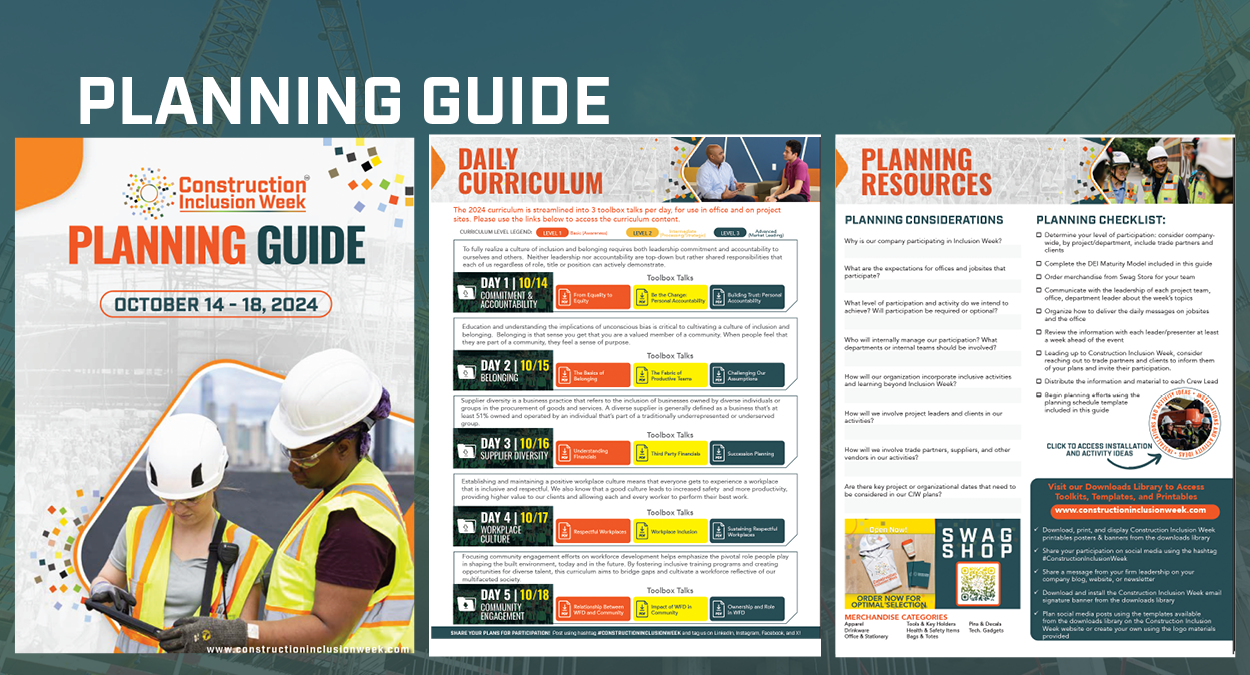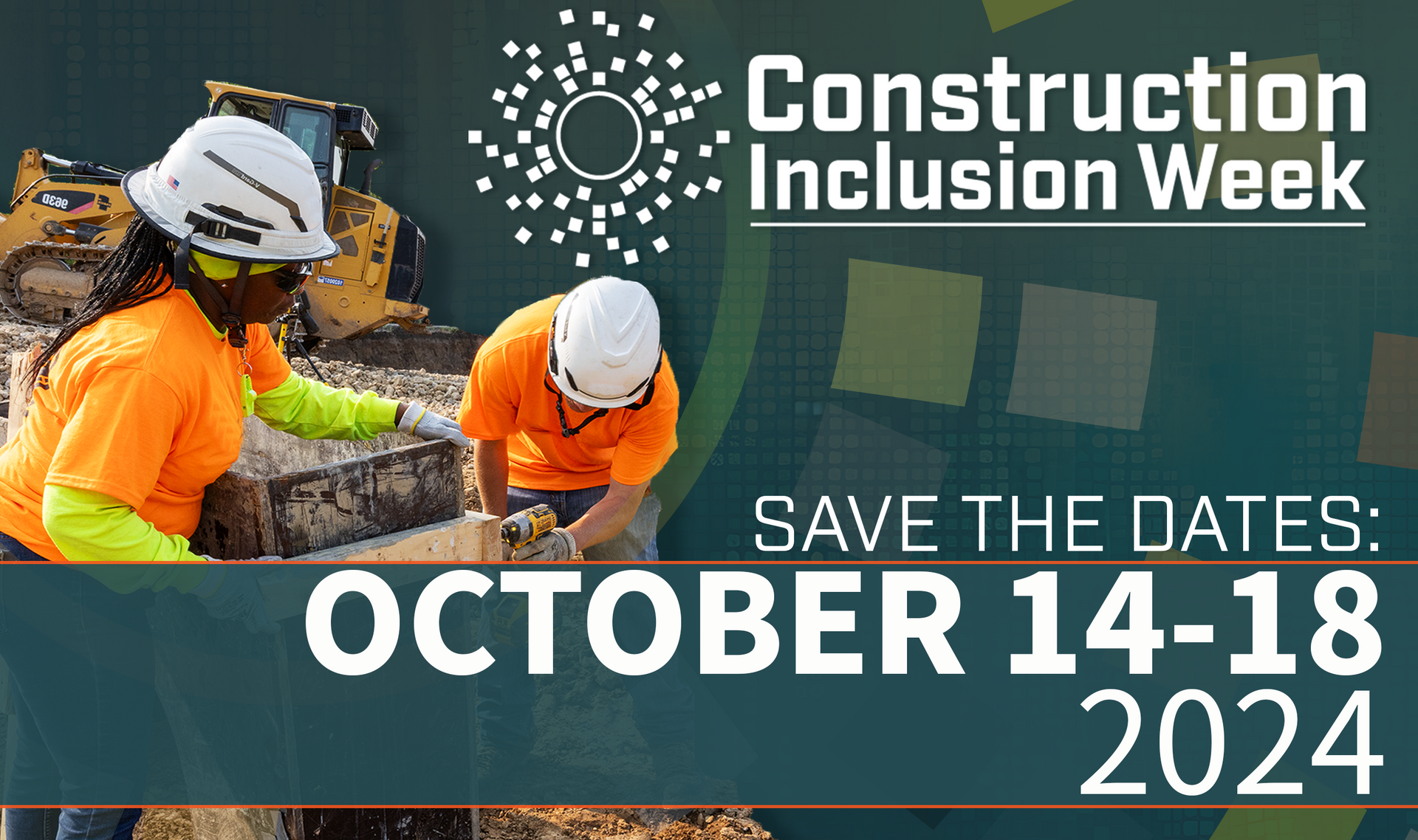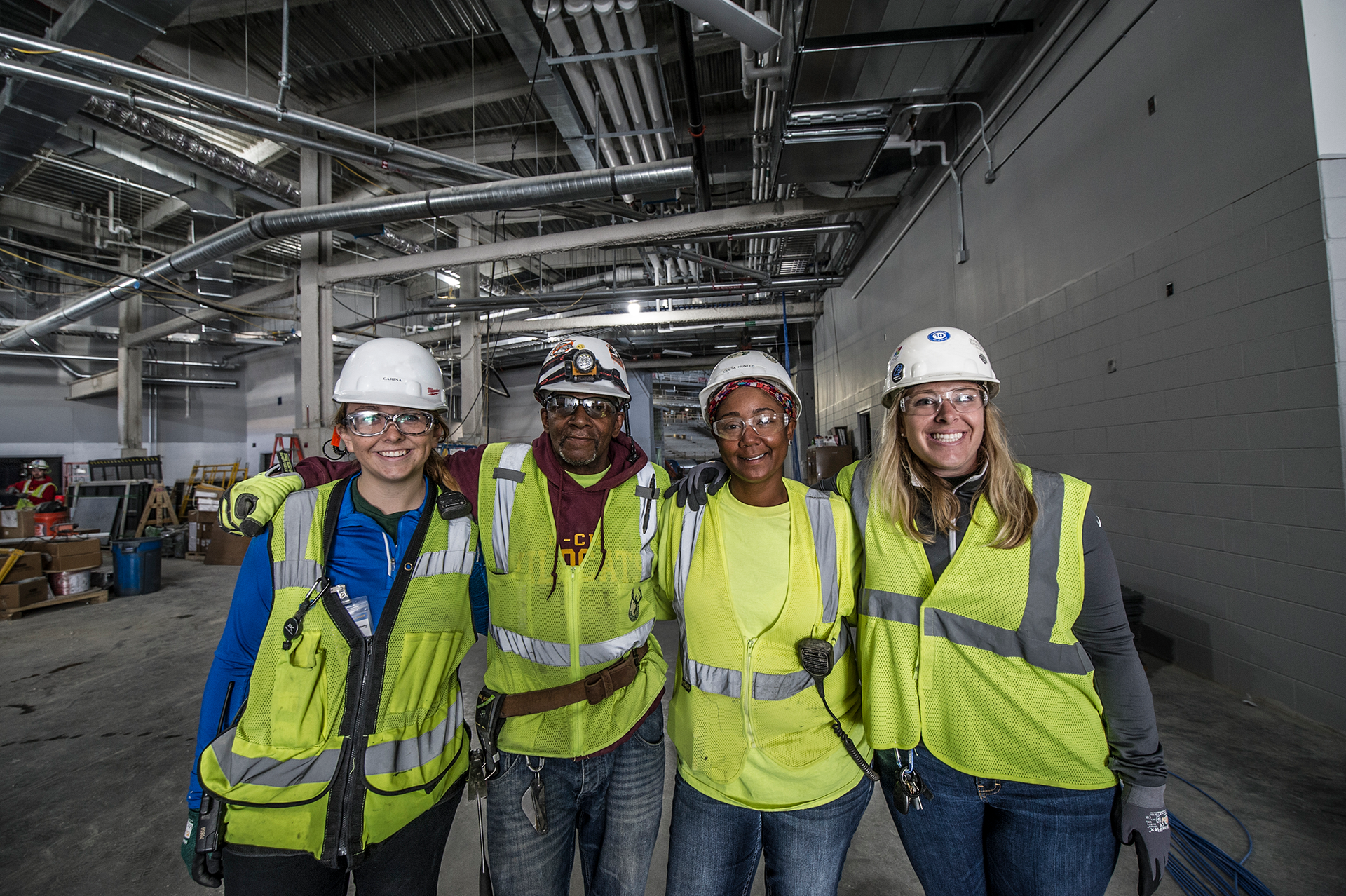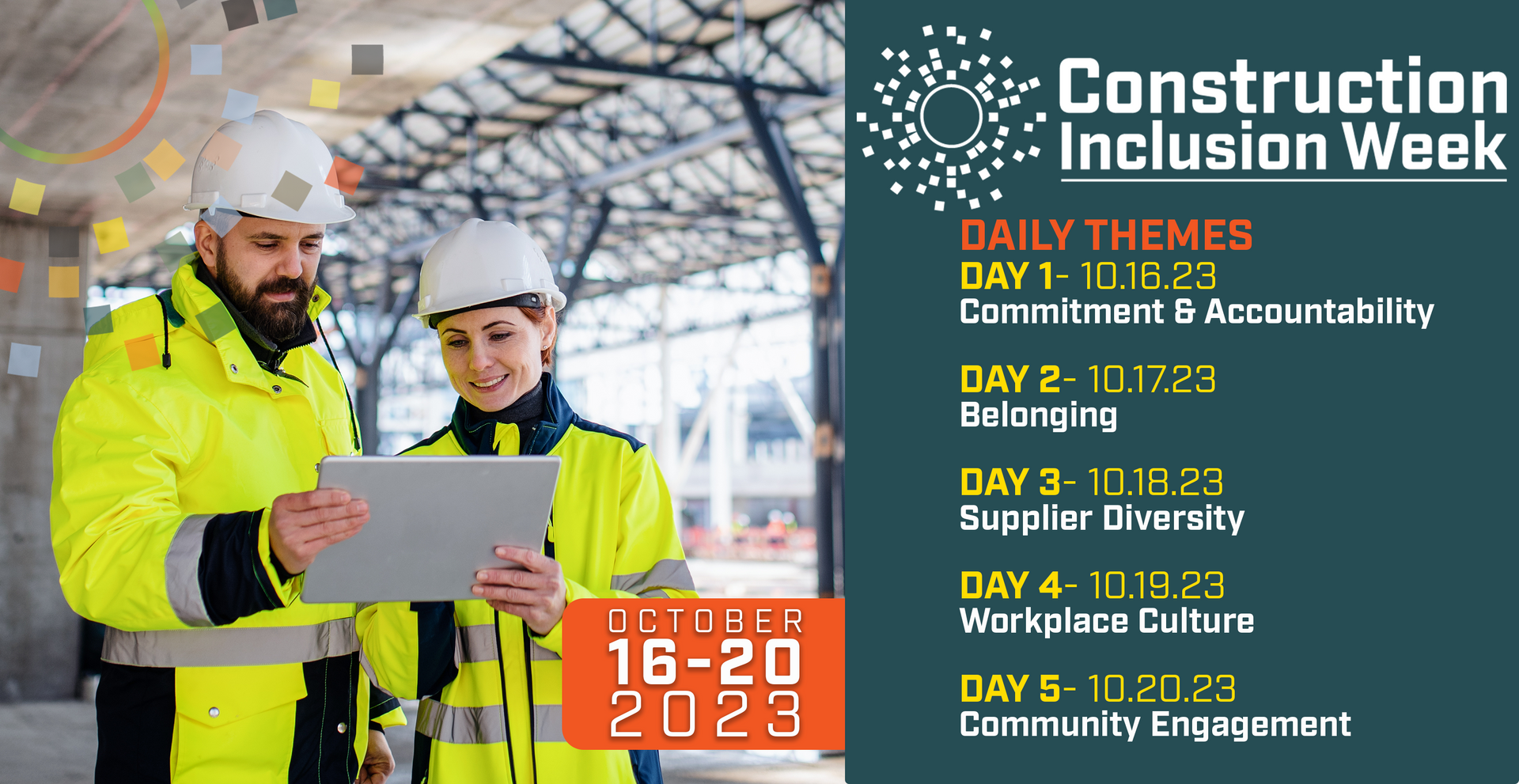Construction Inclusion Week featured in Construction Dive
CONSTRUCTION DIVE - DEEP DIVE
Construction Inclusion Week: Why 6 top CEOs are drawing a line on hate
Set for Oct. 18-22, the initiative is aimed at helping contractors 'move the needle' on diversity and equity on jobsites.
Joe Bouquin,
Senior Reporter
If you're a construction worker and you like to hang up nooses at work, write racist or sexist graffiti in the bathrooms or post hate speech on your social media account, take this as your two weeks' notice: You need to start looking for a new career.
That's the message and united front that six leading construction CEOs are putting out to the more than 200,000 workers whose paychecks they collectively sign off on, leading up to the inaugural Construction Inclusion Week, which kicks off Oct. 18.
The move comes in the wake of more than 20 hate acts on jobsites across North America over the last 18 months, including multiple nooses placed in work areas and racist graffiti scrawled in restrooms.
"Everybody has a choice," said Dan Johnson, CEO of Minneapolis-based M.A. Mortenson. "We've made a choice that we're going to be diverse and inclusive and to embrace equity. If you don't want to do that, you don't have to work here."
Along with Mortenson, industry heavyweights Gilbane Building Co., DPR Construction, Turner Construction, McCarthy Building Companies and Clark Construction Group are the founding sponsors of the initiative.
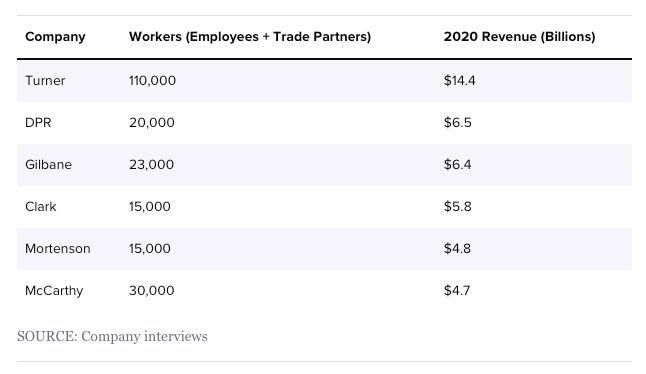
New ParagraphThese six CEOs told Construction Dive their firms are spearheading the initiative now to change perception of the industry, make construction sites a better place to work for everyone who wants to be on them and increase diversity, equity and inclusion within the building professions. They also want to send a clear message to the haters that they are not welcome onsite anymore – something they're already doing.
"We're terminating subcontractors, and putting them in default when they don't support our efforts to determine who's responsible for hateful acts," said Peter Davoren, the outspoken CEO of New York-based Turner. Turner was at the forefront of confronting hate in the industry last year. It shut down jobsites where nooses or racist graffiti appeared, and inserted language into its contracts to hold subcontractors accountable for exclusionary behavior onsite. Examples include a drywall subcontractor at a Seattle construction site and steel workers at a Denver International Airport job where nooses were found, whom Turner fired when it didn't get the level of cooperation from the companies that it wanted.
Similarly, Gilbane CEO Mike McKelvy said he has fired several workers who included both racist material, and their association with Gilbane, on their social media accounts.
"We weren't going out and searching people's Facebook pages," McKelvy said. "But somebody who knows our company's culture would see a post, and that they worked for Gilbane, and they would reach out to us to say, 'I don't think this is representative of who you are as a company.'"
Why they're doing it
While Construction Inclusion Week's objectives may sound lofty, the founders see the initiative’s success – or failure – as an existential battle for the hearts and minds of the workers who fuel the industry.
"This is mission critical," Johnson said. "We cannot attain the goals we have for our company, or our industry, unless we embrace diversity, equity and inclusion. The demographics are changing, and if we only recruit and retain people from a shrinking sliver of the population, that's not sustainable."
Indeed, workers in the construction industry are 88.6% White, compared to 78% in the general workforce. Against that backdrop, these six companies taking it upon themselves to promote diversity and inclusion highlights the bigger challenges construction faces as it struggles to bring jobsites into the 21st century.
"All of us that have been in the industry for a long time realize the reputation and the perception of the construction general contractor has never been good," said Davoren, who feels the "caste system" of jobsites – where various workers are placed in a hierarchy above others, with management above everyone – has contributed to an exclusionary environment in the industry. "Now we have an opportunity to do the right thing."
How it happened
In addition to taking part in Associated General Contractors of America's Culture of CARE inclusion initiative, the companies decided to tackle the issue of inclusion and diversity head on as well, the CEOs said, because they are too important to pass off to someone else.
"If we had to stand by and wait for an association to create policy, it's not going to work," Davoren said. "The only way we're going to get critical traction is to do it on our own."
That said, both AGC and Associated Builders and Contractors are participating in Construction Inclusion Week.
McKelvy said the group hopes its heft within the industry makes others take notice. "As a founding group of companies, we have a little bit of gravitas," McKelvy said. "We might be able to step out there and say, 'This makes a big difference.'"Or as Davoren put it, "With the whole group, it's hundreds of thousands of construction workers. Now you're moving the needle."
